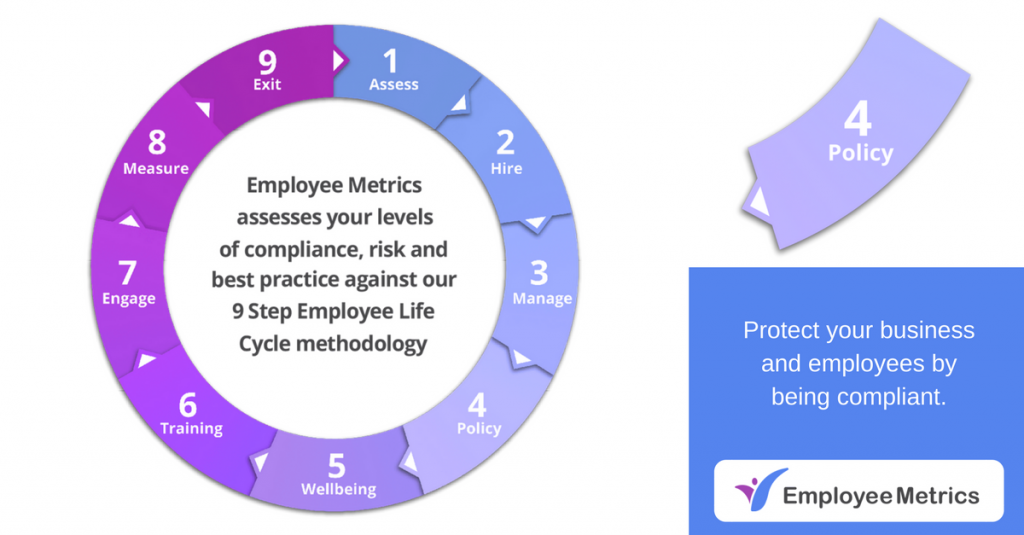
Policy: Step 4 of the Employee Life Cycle
If you are new to our Employee Life Cycle series, click here to go back and begin at Step 1, or read on for Step 4 – Policy.
Benefits of up-to-date policies
There are many benefits to having well documented, up-to-date policies. They can help shape organisational management and performance and guide how employees engage externally with customers and clients.
They set the rules and guidelines for decision-making in day-to-day situations so that employees can operate safely and effectively in the workplace.
Value of good policy
Having consistent workplace policies, that are known and considered, ensures that everyone is consistently managed. They set behavioural standards in the workplace for many different issues such as health and safety, harassment, bullying, internet use and social media. These are just a few that necessitate the need for clear direction and communication of policies, but there are hundreds of policies that could be valuable for organisations, depending on size, complexity of business, geography and industry.
Having best-practice policies in place can also communicate stability and ensure consistency in operational procedures throughout an organisation.
Proactive compliance
Often, organisations know that they need to update their policies, but they sometimes undervalue their importance and the protection that workplace policies can bring them.
They are also sometimes unaware of some of the significant fines imposed for breaching workplace health and safety laws. Breaches can cost between $50k to $3 million per breach.
Whilst workplace health and safety laws are the only policies that are mandatory, it makes good sense to review and assess current workplace policies regularly to benchmark workplace compliance against industry standards, which do often change.
At the end of the day, having workplace policies and procedures in place is only worth the time and effort, if they are properly constructed, communicated and monitored.
Step 4 Policy: Protect your business and employees by being compliant.
Employee Metrics diagnostic platform walks you through a detailed assessment, supported by an experienced HR Consultant, it generates a detailed report of your position across the 9 steps of the Employee Life Cycle.
Watch out for next week’s Employee Metrics article;
Step 5 Wellbeing: How best to meet your legal requirements regarding workplace health and safety.